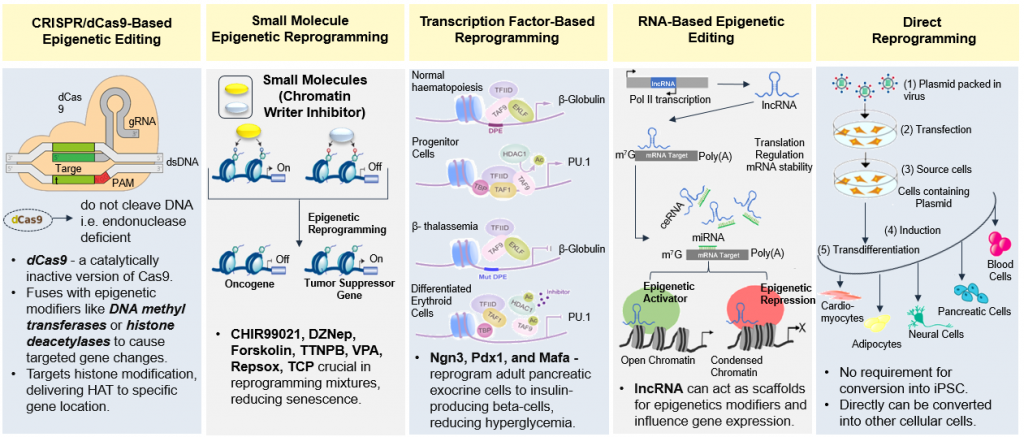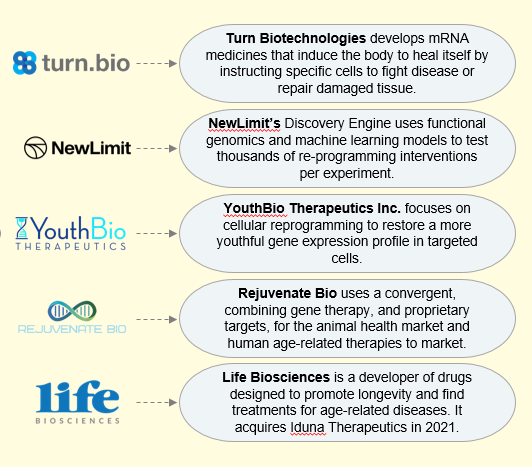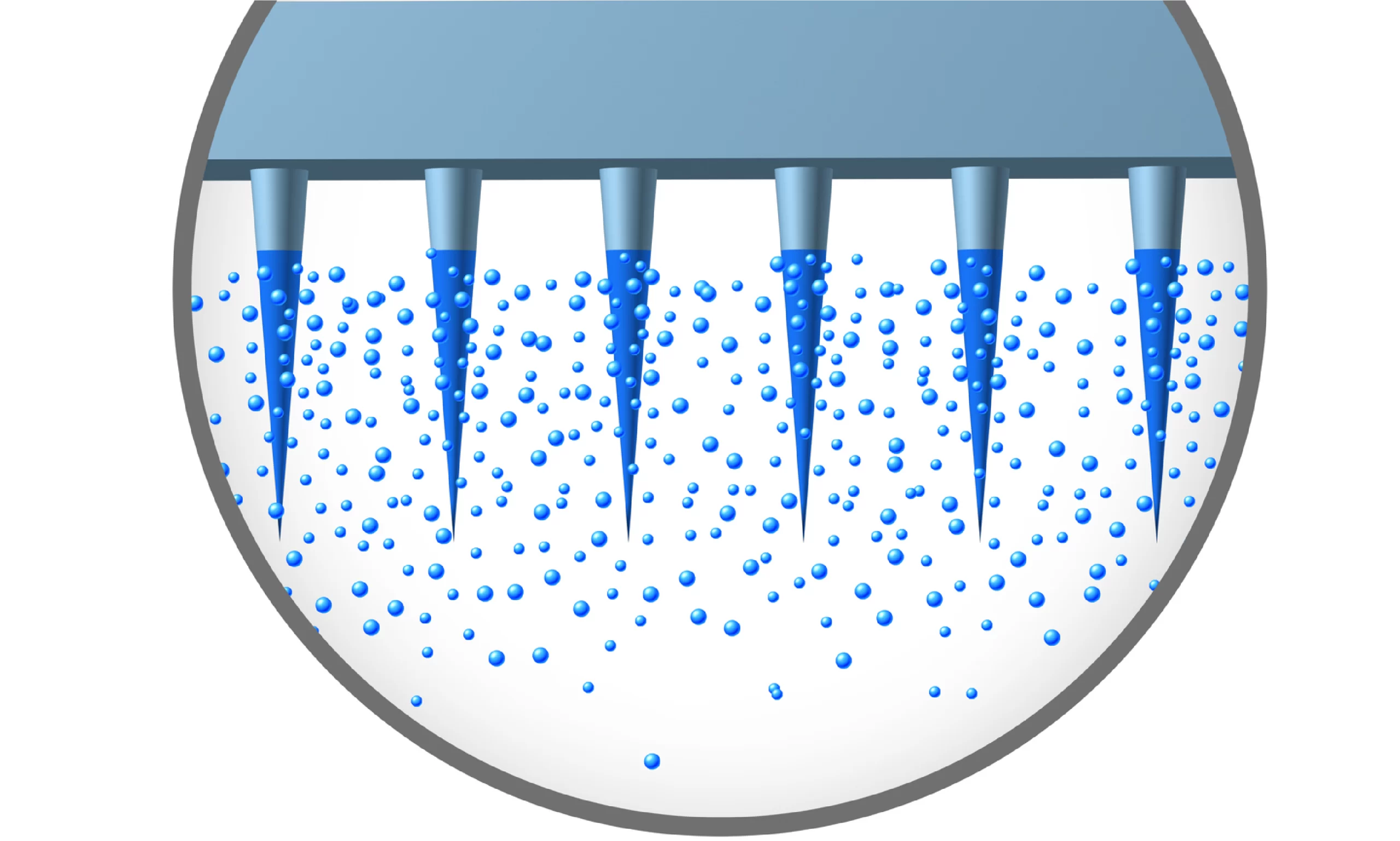Therapeutic Potential of Epigenetic Reprogramming
Epigenetics refers to the stable modifications in the cell functioning due to environmental and behavioral factors that do not involve any changes in the DNA sequence. Epigenetic reprogramming methods, which have undergone significant advancements, are currently at the forefront of medical research and are gaining widespread attention as promising strategies for treating various disorders/diseases.
The technology entails epigenome remodeling. It results in the loss of molecular traits of the original cell lineage and the acquisition of new properties unique to the reprogrammed cell. Reversing epigenetics is explored by many researchers and helps them innovate ways to reverse aberrant epigenetic patterns associated with conditions such as cancer, neurodegenerative disorders, cardiovascular diseases, and even certain genetic disorders. Recent advances in epigenetics and precise manipulation have proved its capability to develop novel and efficient reprogramming processes. Thus, combating a wide range of complex medical challenges.
The actual hurdle hinges on the epigenome’s editing by any safe and accurate editing tool for the therapeutics. The advancements in the technologies that are capable of and can be utilized explicitly for epigenetic reprogramming are represented below:

Tools for Epigenetic Reprogramming
- CRISPR-Cas9: Fused with epigenetic modifiers to target specific gene promoters. CRISPR-based epigenetic editing enables the introduction of specific epigenetic changes associated with a disease phenotype in cellular or animal models that help understand disease mechanisms.
- Small Molecules: Small molecules targeting epigenetic regulators, such as DNA methyltransferases or histone deacetylases, can modulate the epigenetic landscape in cancer cells.
- Transcription factor-based reprogramming: Gene expression modification enables personalized therapeutic strategies targeting specific alterations
- RNA-based epigenetic editing: Silences specific genes by targeting and deactivating their expression. RNA-based epigenetic editing can be utilized to modify DNA methylation patterns, which play a critical role in gene regulation.
- Direct reprogramming: By epigenetically reprogramming cells directly into disease-relevant cell types affected by a disease’s models in the laboratory. These models can be used to study disease mechanisms, screen potential drugs, and develop personalized therapies.
Latest Therapeutic Treatment
- Cardiovascular Diseases: Gilbert syndrome (GS) is a hereditary condition characterized by mild hyperbilirubinemia. It’s caused by mutations in the gene encoding the bilirubin-degrading enzyme, i.e., UGT1A1. Bilirubin has been found to be a viable candidate for endothelial aging treatments. Moreover, high bilirubin results in a low risk of CVD. It utilizes Biliverdin reductase A enzyme for reversing senescence in cells when over-expressed.
- CAR-T cells for Solid Tumors: Antigen heterogeneity has been achieved by using DNMTis and HDACis to induce the expression of CTAs and HERVs. Impaired trafficking has been achieved using histone, DNA, and miRNA modifications to overexpress chemokines and their receptors.
- Hair Loss: Epigenetic gene activation of the LHX2 gene can help in hair regrowth. Interestingly, the LHX2 gene is active during the hair growth phase and is turned off during the resting phase.
Emerging Players in the Epigenetic Reprogramming Domain

Future Outlook
Currently, North America has emerged as one of the primary growth promoters. Also, it has risen as a technology drivers in this domain, especially in the field of oncology. Next-generation sequencing has been a major contributor. It provides a solution for gaining traction across epigenetic research activity due to their ability to sequence epigenome rapidly.
With respect to the applicative methods, DNA methylation, and histone modification stand out as the most effective. In addition to several key players in this field, including Resverlogix (experimenting with BET proteins as a histone reader), BioAge, Rejuveron, and Ternalys Therapeutics (SAGUARO platform that simultaneously delivers and expresses multiple microRNAs), PacBio made a significant step of introducing DNA methylation capabilities via its Sequel product line in the USA, expanding accessibility to the epigenome through HiFi sequencing technology.



